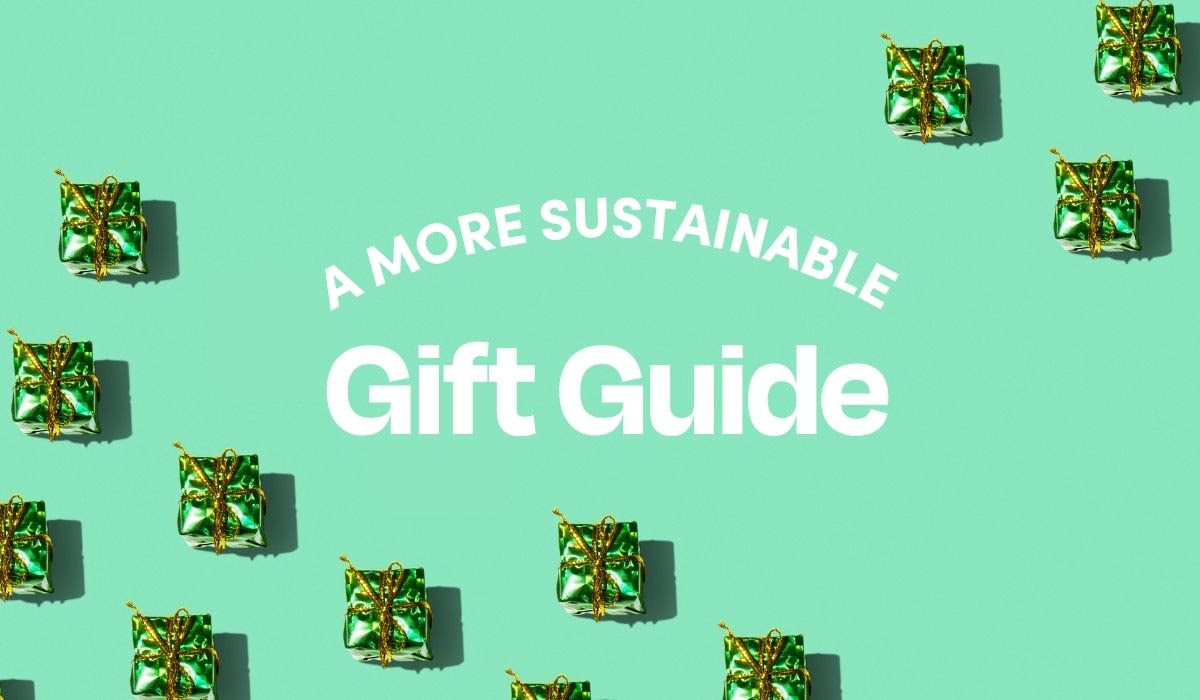How to Choose Sustainable Pillows

When purchasing a new pillow, look for GOTS certified organic cotton, GOLS certified organic latex, and buckwheat hull. Avoid nasties like polyurethane foam, and try to buy recycled down over virgin down. If virgin down is a must-have in your household, look for products that are certified by Global Traceable Down Standard or Responsible Down Standard to ensure you’re not accidentally supporting live-plucking practices.
Materials
Polyurethane Foam
Polyurethane foam, made from polyurethane plastic, is a common material in memory foam pillows. As we know, plastic is made from crude oil (AKA fossil fuels) and has significant emissions, resource use, and waste implications. Additionally, polyurethane foam is a significant source of VOC emissions. Why do VOCs matter, you ask? Well, according to the EPA, exposure to VOCs can cause eye, nose, and throat irritation, headaches, and nausea, not to mention liver, kidney, and central nervous system damage. A study on VOCs in bedding products found that polyurethane (and polyethylene, a slightly firmer plastic foam) emitted the most VOCs in comparison to other pillows. Some VOCs are also carcinogens… which is so not what we want in our sacred sleeping spaces.
Polyester
Polyester is created from non-renewable petroleum, so for starters, we don’t love that. Refining petroleum tends to have involved environmental, social, and political implications and it’s super difficult to get transparency into these supply chains. In fact, the Council of Fashion Designers of America, Inc. trade association has yet to find a company that can trace its polyester fiber back to its raw material source. But polyester is pretty cheap, so if you’re on a budget, keep an eye out for pillows made with recycled polyfibers. Recycling polyester requires two-thirds the amount of water it takes to produce virgin polyester and can cut down on energy use by 59%. Not too shabby. Whether you end up with virgin or recycled polyfibers, however, there’s still the problem of microplastics. Polyfibers shed microplastics when they’re laundered (which should happen every few months, BTW) and those microplastics can accumulate in our bodies and waterways.
Buckwheat Hull
Remember that study on VOCs in bedding products? They found that buckwheat hull pillows emitted the fewest chemicals overall. So what’s the deal with this material? Currently, roughly 90% of the world's production of buckwheat is of the common variety of the plant found in China and Russia. It grows best in cool, moist climates, but can grow in poor soil quality – even sandy or acidic ground. This means that the plant can be cultivated on land that might otherwise be considered unproductive. Buckwheat is also often used as a cover crop – meaning that it is planted in soil between the rotation of more economically valuable crops to rehabilitate the soil (by protecting it from runoff or retaining nutrients). It is also used to attract honey bees and wild pollinators because of its abundant flowers. As a result, buckwheat has very beneficial impacts on the biodiversity of plants and pollinators alike.
The part of the buckwheat plant that is used in pillows is actually the husk – or the outside layer of the grain. This layer, like husks and shells, is often agricultural waste (i.e. it doesn’t end up being used). But buckwheat hucks, because of their ability to function as a soft filler and textile, do not go to waste. They are used as a low-cost organic textile material that comes with added environmental biodiversity benefits. Go buckwheat!
Cotton
In general, plant-based materials like cotton require less energy to manufacture compared to petroleum-based alternatives like polyester. However, the production and maintenance of cotton products require a lot of water compared to these alternatives. Luckily, some cotton is grown in ways that can be kinder to our planet. In an LCA (life cycle analysis) looking at the differences between organic cotton and conventional cotton, the Textile Exchange found that organic cotton is 46% less harmful to global warming, creates 70% less acidification of land and water, causes 26% less soil erosion, and uses 91% less surface and groundwater and 62% less energy. Organic cotton is grown without relying on harmful chemicals for fertilization, leaving the soil, air, and water with fewer contaminants. It also produces around 46% less carbon dioxide compared to conventional cotton, which also contains nasty pesticide residues that can lead to endocrine disruption and cancer.
Natural Latex
Natural latex is made from the sap of rubber trees, whipped into a froth, poured into molds, and baked into layers. Rubber trees can produce sap for more than 20 years and don’t need to be cut down during sap collection. This is great news for the health of the trees and the soil since the longer a tree remains in the ground, the more nutrients the tree can absorb and the soil can retain. We are huge proponents of natural latex for its supportive, durable, and naturally antimicrobial properties. The latex production industry has, however, faced criticism for contributing to deforestation, carbon emissions, and biodiversity loss in Southeast Asia where most rubber trees are grown. In Cambodia alone, rubber tree plantations have led to a quarter of the country’s deforestation. While global demand for latex has led to these issues, natural latex is still a highly recyclable material, which is definitely a plus if you dispose of your pillow properly.
Synthetic Latex
While natural latex itself is a low-impact material, it sometimes is mixed with synthetic foam or harsh chemicals to produce synthetic latex. Be mindful of the other ingredients beyond latex when choosing a pillow. To avoid nasty additives like VOCs, look for latex products with the Global Organic Latex Standard (GOLS) certification. GOLS certifies social and environmental standards across the entire supply chain so you can rest assured that everyone who worked on your product did so in safe conditions free of harmful chemicals.
Down refers to the soft layer of clusters taken from the chest area of a goose, swan, or duck. These clusters are round and fluffy like a dandelion or cotton ball. Down is soft, light, and airy, insulates better than feathers, and doesn’t flatten out as quickly since it doesn’t have quills. All of these attributes make down more valuable than feathers.
The down industry produces 270,000 metric tons annually. In theory, as long as the commercial poultry industry is in existence, down and feathers could be a byproduct that (again, theoretically) limits the amount of waste to landfill during processing. The unfortunate reality is that in conventional down production, waterfowl are often plucked while they’re alive. This practice is outlawed in the U.S., but it still takes place in Hungary, Poland, and China, the world’s largest down producers. In fact, it’s estimated that 50-80% of the down on the market is live-plucked. That’s a lot of unnecessary suffering.
If you choose to buy down products, check for certifications by Global Traceable Down Standard or Responsible Down Standard. These certifications ensure that no down came from live-plucked or force-fed birds and that animals had access to the Five Freedoms of animal welfare, including freedom from hunger and thirst; freedom from discomfort; freedom from pain, injury, and disease; freedom to express normal and natural behavior; freedom from fear and distress.
Certifications
Here are some certifications to look for when shopping this category.

The Global Traceable Down Standard ensures that the down in your pillow comes from a source that emphasizes animal welfare and supply chain traceability. This includes no force-feeding or live-plucking of the birds, respect for the Five Freedoms of animal welfare, education, and training on animal welfare across the entire supply chain. The standard is enforced by a third-party audit and compliance program to ensure that companies with this certification are actually meeting the rules and regulations they claim to adhere to.
.avif)
The Responsible Down Standard is a certification from the Textile Exchange. This standard works to ensure that the birds in the supply chain have not been subjected to unnecessary harm. While “unnecessary harm” may sound arbitrary, the certification sets out extensive metrics and expectations for companies to meet, including no force-feeding, sufficient food, clean and safe drinking water, and access to clean and well-ventilated shelters, among other important health, well-being, and welfare standards.

The CertiPUR-US certification is a standard for polyurethane foam. While other certifications ban polyurethane foam holistically (like the GOLS certification), the CertiPUR-US certification prohibits substances like polybrominated diphenyl ether (PDBE) and flame retardants which can emit VOCs, and they require testing for formaldehyde. Unfortunately, polyurethane is, and will always be, made from plastic. While this certification ensures that the polyurethane being used is safer for human health, it doesn’t change its relationship with the fossil fuel industry. It’s also important to note that the CertiPUR-US certification is managed by the Alliance for Flexible Polyurethane Foam, which has a Board of Directors made up mostly of people in the polyfoam industry who have a vested interest in the continued use of polyurethane.

When it comes to latex, look for products with a Global Organic Latex Standard (GOLS) certification to avoid nasty additives like VOCs. GOLS certifies social and environmental standards across the entire supply chain so you can rest assured that everyone who worked on your product did so in safe conditions free of harmful chemicals. This certification also ensures that the product is made from 95% organic latex, with stringent chemical restrictions, as well. Those chemical restrictions make sure that your mattress doesn’t contain flame retardants, which are known carcinogens.

GOTS is the gold standard of textile certifications (which is why we like to pronounce it GOAT-S). It requires that at least 70% of the materials in the product are organic and that the product complies with multiple environmental and social criteria along its entire supply chain. If you opt for sheets made with cotton, hemp, silk, or linen, definitely prioritize finding this label.

The OEKO-TEX standard guarantees that every component of a product has been tested for potentially harmful substances such as pesticides, heavy metals, and formaldehyde, which predominantly impact people working at manufacturing facilities. This label means that the product is relatively harmless to human health, which is great for the people who make the sheets AND the people who sleep on them.
Join today to get access to product recommendations,
unlimited articles, and exclusive weekly content.
(16% discount)
Already a member? Log in.
Choose Wisely with Finch

Green Pillow
These pillows are chock-full of the good things: GOLS Certified organic latex, organic jersey cotton liner, and organic kapok (cotton-like plant fiber)



Organic Pillow
These pillows are made with cruelty-free wool directly from New Zealand, and Birch donates 1% of sales to the Natural Forest Foundation. Sign us up.


Down Alternative Pillow
This pillow comes in three different supports (soft, medium or firm) and is made under fair trade conditions


Adjustable Latex Pillow
This pillow has adjustable firmness which we LOVE, almost as much as its MADE SAFE certification


Easy Breather Pillow
This pillow is Non-Toxic CertiPUR-US Certified Virgin Foam and has a cooling fabric that disperses hit and wicks away moisture

Latex Pillow
These are made with natural latex and is the most luxurious pillow we've found

Learn more about our sources and methodology
LEARN MORE











